Predictions & Data for this entry
| Model: std | climate: MB, MC | migrate: Mdc | phylum: |
| COMPLETE = 2.5 | ecozone: MAbl | food: bjPz, jiCi | class: |
| MRE = 0.052 | habitat: jiFm, 0iMm | gender: D | order: |
| SMSE = 0.008 | embryo: Mp | reprod: O | family: |
Zero-variate data
| Data | Observed | Predicted | (RE) | Unit | Description | Reference |
|---|---|---|---|---|---|---|
| am | 4015 | 4014 | (0.0001491) | d | life span | guess |
| Lp | 10.5 | 10.16 | (0.03251) | cm | total length at puberty | guess |
| Li | 21.9 | 22.06 | (0.007257) | cm | ultimate total length | fishbase |
| Wwb | 6.5e-05 | 6.342e-05 | (0.02425) | g | ultimate wet weight | guess |
| Wwp | 11.6 | 11.68 | (0.006839) | g | wet weight at puberty | guess, fishbase |
| Wwi | 112 | 119.6 | (0.0677) | g | ultimate wet weight for females | fishbase |
| Ri | 4384 | 4069 | (0.07165) | #/d | max reprod rate | guess |
Uni- and bivariate data
| Data | Figure | Independent variable | Dependent variable | (RE) | Reference |
|---|---|---|---|---|---|
| LW_f | 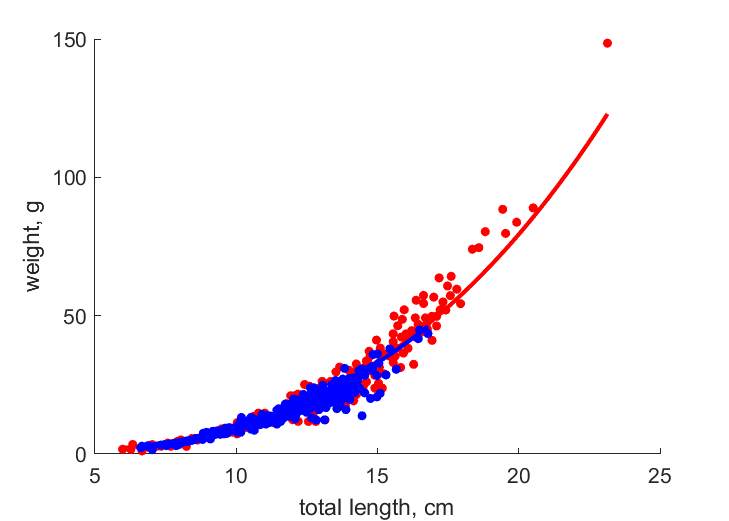 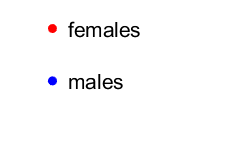 | total length | weight | (0.1333) | CiloAkgu2019 |
| LW_m |   | total length | weight | (0.1361) | CiloAkgu2019 |
| tL_fm | 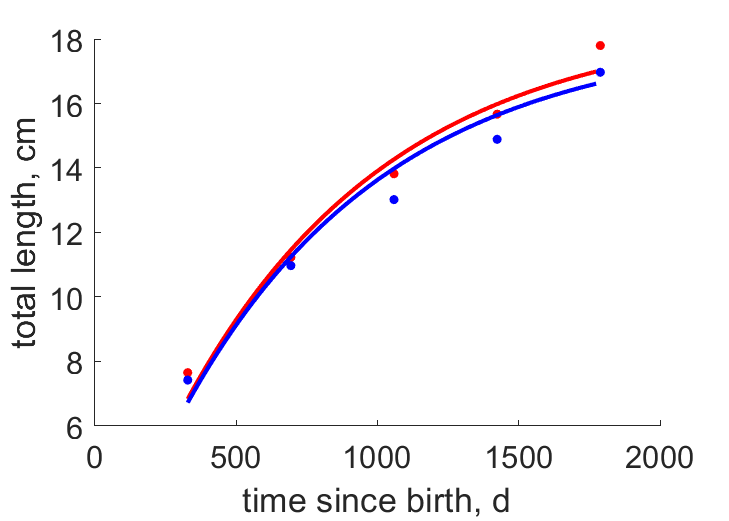 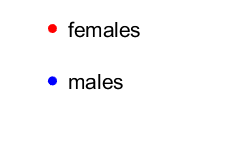 | time since birth | total length | (0.04327) | CiloAkgu2019 |
| tW_fm | 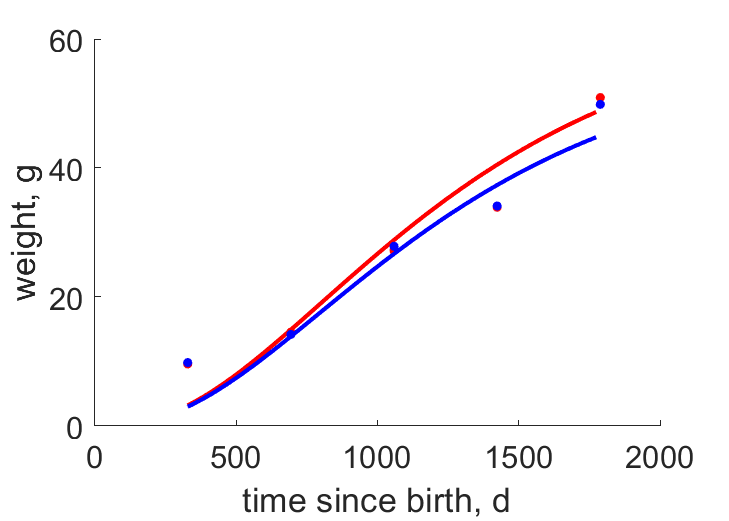 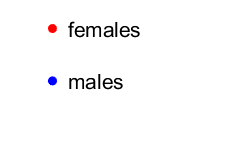 | time since birth | weight | (0.123) | CiloAkgu2019 |
Pseudo-data at Tref = 20°C
| Data | Generalised animal | Mullus ponticus | Unit | Description |
|---|---|---|---|---|
| v | 0.02 | 0.02576 | cm/d | energy conductance |
| p_M | 18 | 32.31 | J/d.cm^3 | vol-spec som maint |
| k_J | 0.002 | 0.002 | 1/d | maturity maint rate coefficient |
| k | 0.3 | 0.3231 | - | maintenance ratio |
| kap | 0.8 | 0.3694 | - | allocation fraction to soma |
| kap_G | 0.8 | 0.8015 | - | growth efficiency |
| kap_R | 0.95 | 0.95 | - | reproduction efficiency |
Discussion
- males are assumed to differ from females by {p_Am} only
- a fecundity of 9e6 eggs seems a lot for a 22 cm fish
Facts
- length-weight: Ww in g = 0.00832*(TL in cm)^3.08 (Ref: fishbase)
Bibliography